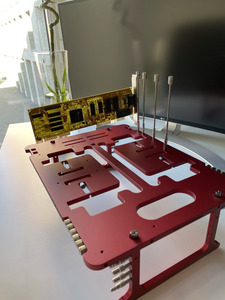Reply 20 of 30, by pshipkov
PVI is one of the finest 486 mobos out there. You should not feel nervous about it, but feel really good instead. 😀
Attached you all the info (manuals, etc), bioses and drivers you will probably need. Skipped the WinXP and Win2k ide drivers.
1.html contains the most relevant info there.
Board does EDO. No observable difference compared to FPM.
The onboard IDE controller is as good as it gets for 486DX# machine.
VGAs: Matrox MGA for PCI and S3 Trio64, Ark1000VL, WD90C33-ZZ for VLB will be very good choice.
MGA are cheap and abundant. The VLB ones are harder to obtain.
In reality S3 Trio64V2/DX PCI or CL5428 VLB will do just fine as well - also abundant and work well.
All best.
